Visit Ein Gedi Nature Reserve for wildlife and nature trails, a fun day visit from Tel Aviv!
[Updated April 2020]
This post contains affiliate links for which Expedition Wildlife may receive a commission (where applicable) at no additional cost to you.
To reach an oasis set in Israel’s Judean desert, visit Ein Gedi Nature Reserve, the perfect getaway out of the city for a day.
When we first decided to take a long weekend trip to Tel Aviv, I first looked up the best places to see wildlife nearby. As it happens, Ein Gedi is one of the best places to spot native wildlife in Israel because of its year-round water source.
After spending some hot days in the desert, the waterfalls and lush greenery will knock you off your feet! As soon as you stand at the entrance of the Reserve, you’ll spot Syrian Rock Hyraxes. These small mammals are found throughout the region. In the park, they walk along the walls and cross the pathways throughout the Reserve.
What the heck is a Rock Hyrax? And other wildlife to see while you visit Ein Gedi
Great question.
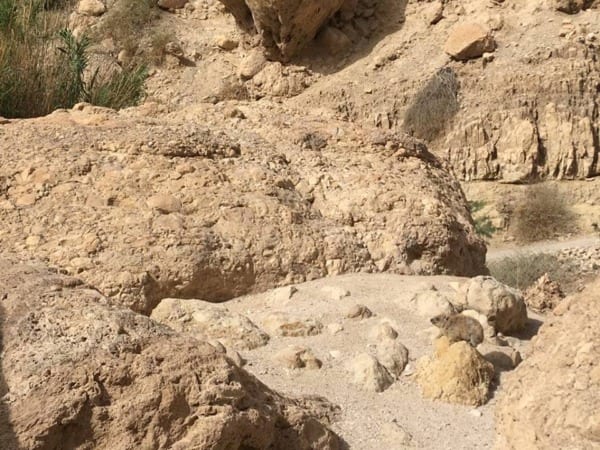
A Syrian Rock Hyrax can be seen basking in the sun on a small rock – see how well they blend into their environment? Photo by Christa Rolls
Rock Hyraxes thrive in Ein Gedi, and are found mostly throughout Eastern Africa and the Middle East. The Syrian subspecies is found more readily in Syria, Lebanon, and Israel.
These medium-sized mammals resemble rodents more than anything, but research suggests they aren’t rodents at all. Rather, they’re closer in taxonomy to elephants! They are so unique, in fact, that Hyraxes have a taxonomic order all of their own. In reality, they remind me a bit of smaller versions of the ROUS’s (Rodents of Unusual Size) from The Princess Bride. Their little faces almost look made up!
These funny creatures are quite social with each other, living in large colonies. Hyraxes are incredibly vocal and communicate with their neighbors often, especially when predators are nearby. The individuals seen in the video below were likely ultra-vigilant because they had young nearby.
Hyraxes tend to breed in August and September, giving birth around April to May, and our visit landed at the end of May.
Rock Hyraxes, per their name, live and breed in rock formations with crevices in which they hide and sleep. They’re most likely to be found laying flat on their belly on top of rocks, basking in the sun.
These creatures are of least concern for the International Union of the Conservation of Nature (IUCN), but they do have natural predators in the area. The Verreaux’s or Black Eagle is a specialist, preferring to feed mostly on Rock Hyraxes. It’s possible, then, to see these beautiful birds of prey and others during your visit!
Other Ein Gedi Wildlife
Ein Gedi is the only nearby location with water flowing year-round, so foxes, jackals, and wolves frequent the reserve. Don’t worry, they’re mostly only visible after-hours when the park is closed. It’s for this reason that people are not allowed to stay after dark and exit times are strictly enforced.
The lush vegetation and free-flowing water also make this a hotspot for birds year-round, especially as a stop-over site during migration.
Keep at keen eye out for Nubian Ibex as you walk the trails through the Reserve. They’re most likely seen under the trees and along the rocky crags of the canyon walls. Preferring more remote and rocky locales, these desert goats are found in limited parts of the Middle East and northern Africa. They are considered endangered throughout their range. Their decline continues each year due to poaching, so having the opportunity to see them during your Ein Gedi visit is a wonderful thing.
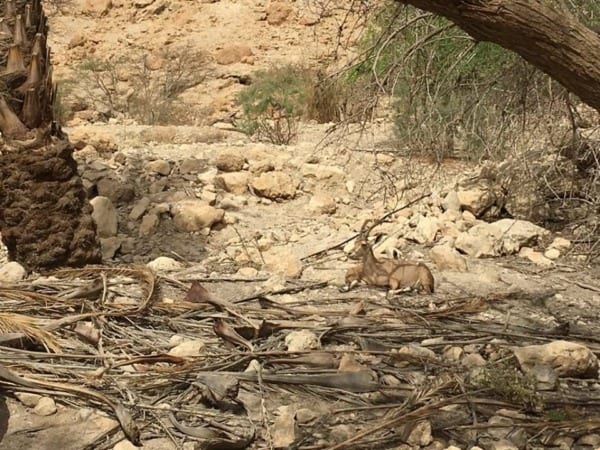
A Nubian Ibex lying in the shade of nearby trees, along the trail leading to the Reserve entrance. This individual was in a group of about ten others! Photo by Christa Rolls
Hiking Trails in Ein Gedi
There are a number of hikes throughout the Reserve, the most popular being the one to David’s Waterfall. Upon your entry to the Reserve, you’ll receive a map with the hiking trails you can do. These include the two main canyon trails through Wadi (meaning “valley” in Arabic) David and Wadi Arugot.
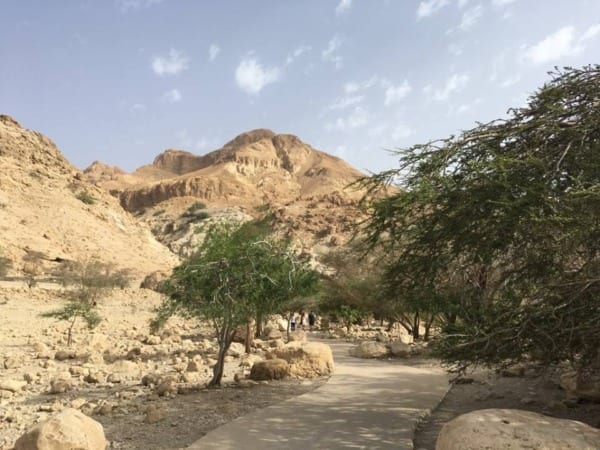
Paved pathways give way to rocky, narrow paths. Waterfalls await, however, so it’s worth the walk! Photo by Christa Rolls
Wadi David Hike
The trails up Wadi David are the first you’ll encounter as you enter the Reserve from the main entrance. As you walk the trail leading up past the David Waterfall, feel free to dip your toes in one of the many refreshing pools along the way. The pools are clear turquoise, and truly a sight to behold! Watch your step on the areas with wet rock as they may be slippery.
The Wadi David Hike to David Waterfall takes about an hour round-trip to complete. This can be easily done, even if you’re only planning a short stopover.
Ein Gedi is also home to an ancient Synagogue that you can hike to directly from the Wadi David trail. The Synagogue remains date back as early as the 3rd Century and likely came into ruin in the 6th Century. Despite its old age, it wasn’t re-discovered until the 1970s! The floor of the Synagogue is unique in itself and is largely well-preserved for its age.
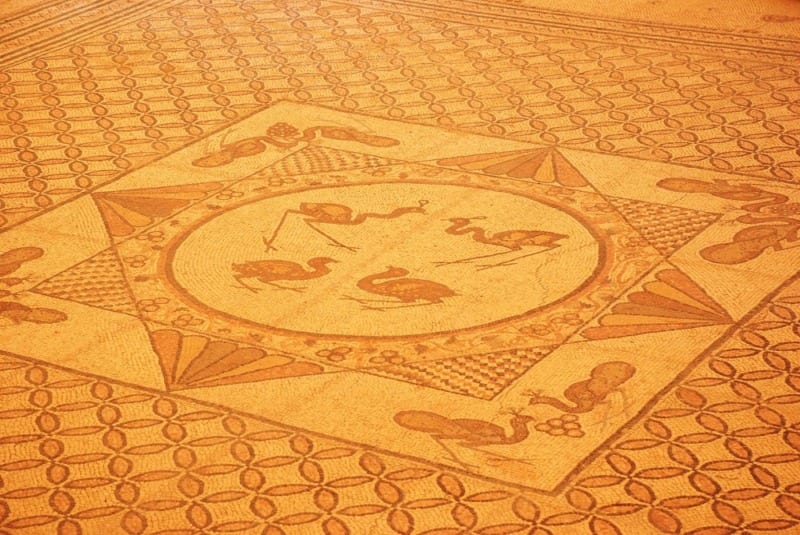
Wadi Arugot Hike
Another trail takes you to Wadi Arugot and Hidden Fall, which also takes about an hour round-trip to complete. This route is less covered by the canyons and is drier, not directly following open streams, taking you further into the desert landscape. The trek makes you especially glad to see Hidden Fall at the end, where you’ll likely have the refreshing pools of water to yourself.
If you’re feeling adventurous and have plenty of water, continue all the way up to the top of the plateau for an incredible view.
Things to keep in mind
Eating, smoking, and pets are not allowed in the Reserve. However, there are designated areas at the entrance of the Reserve for just this. Unfortunately, people fed the wildlife even when asked not to, thus leading to the current restrictions.
You may bring plenty of water and refreshments with you along the way.
Not bringing snacks may be a source of stress for parents or those with blood sugar issues. Technically, I would say anything that doesn’t produce crumbs, such as fruit leather, would be an acceptable snack to bring. Be cautious about not dropping any food or leaving your trash anywhere in the Reserve. Always carry out what you bring in. And for Heaven’s sake, don’t feed the wildlife.
Remember, you’re in the desert, so bring plenty of water and something to replenish your electrolytes, and a sun hat and sunscreen. Our visit in May yielded temperatures around 80 F (25 C) by the time the sun began to rise.
The Reserve is very strict about ensuring that visitors are out of the gates by closing time. Time your hikes well to leave the premises by the time the gates start getting locked up.
Cost of your visit to Ein Gedi
Entry into Ein Gedi is 27 NIS ($8) for adults and 14 NIS ($4) for children.
If you are planning to visit several reserves and national parks during your stay, consider the “money saving tickets” issued by the Israeli Nature and Parks Authority. These allow you to visit multiple sites at a reduced fare.
Getting to Ein Gedi Nature Reserve
Ein Gedi is around two hours outside Tel Aviv, so the best way to get there is by car or private transfer.
The tour we took for the day brought us to Masada National Park, a fortress with ancient ruins and history, Ein Gedi, and the Dead Sea. However, we didn’t spend nearly as much time at Ein Gedi as we would have liked. We highly recommend spending the whole day exploring the reserve, if possible, but a day trip to the area is also a good option.
The tour guide we used took us to highlights in the region since we only had one extra day. If you are short on time and do not fancy driving, tour guides are a great way to get around. It’s great to have an expert tell you more about the natural history of the region.
Otherwise, you can take the Egged bus #444 (Jerusalem-Eilat line) or #486 (Jerusalem-Neve Zohar line) from Jerusalem. From there, it takes about an hour to reach Ein Gedi. You can reach Jersusalem by bus (#405 or #480) from the main train station in Tel Aviv.
Ticket prices for each are around $8 round-trip. Keep in mind that public transportation, and other services, will shut down every Friday evening to Saturday afternoon for Shabbat!
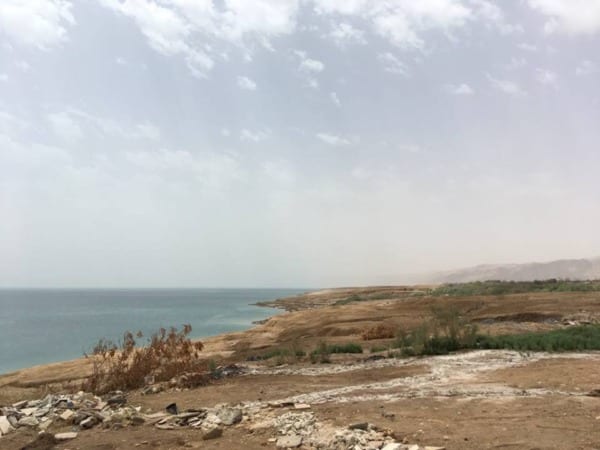
The massive and beautiful Dead Sea, abutting the Judean Desert, with the mountains containing Ein Gedi and Masada in the background. Photo by Christa Rolls
Other Nearby Wildlife Hotspots
Hula Nature Preserve in Northern Israel is one of the best places to see wildlife in the whole country.
Hula stays green year-round, despite being in the middle of a desert, and lush marshes and waterways attract birds of all kinds. This is especially an important stopover site for birds during migration and winter. You’ll find one of the largest groups of wading birds and waterfowl, such as cranes, storks, pelicans, and more, gathering here throughout the whole region. It’s also home to endemic water buffalo, seen throughout the Preserve.
Ein Avdat National Park is another desert oasis, located among a series of canyons in the Negev Desert.
The canyons here are deep and many trails run through their valleys. If you’re looking for a fun expedition-type experience, this is it!
Ein Avdat is another wonderful place to spot birds of prey, as well as other desert-dwelling birds. Nubian Ibex particularly like this spot because of the available water and canyon walls. Note that the pools of water found along the trails are not for swimming, and are rather kept aside for sole use by wildlife.
Visiting the desert, and seeking out its unique wildlife, is such a fun experience. Don’t miss a visit to Ein Gedi for its wildlife watching and hiking opportunities on your Israel trip!
Happy travels!
Christa and Nathan
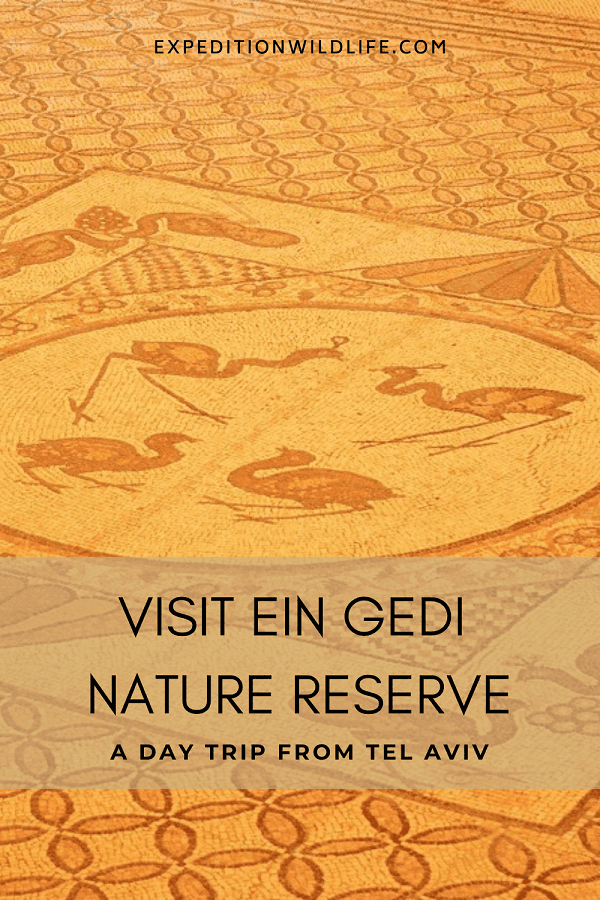

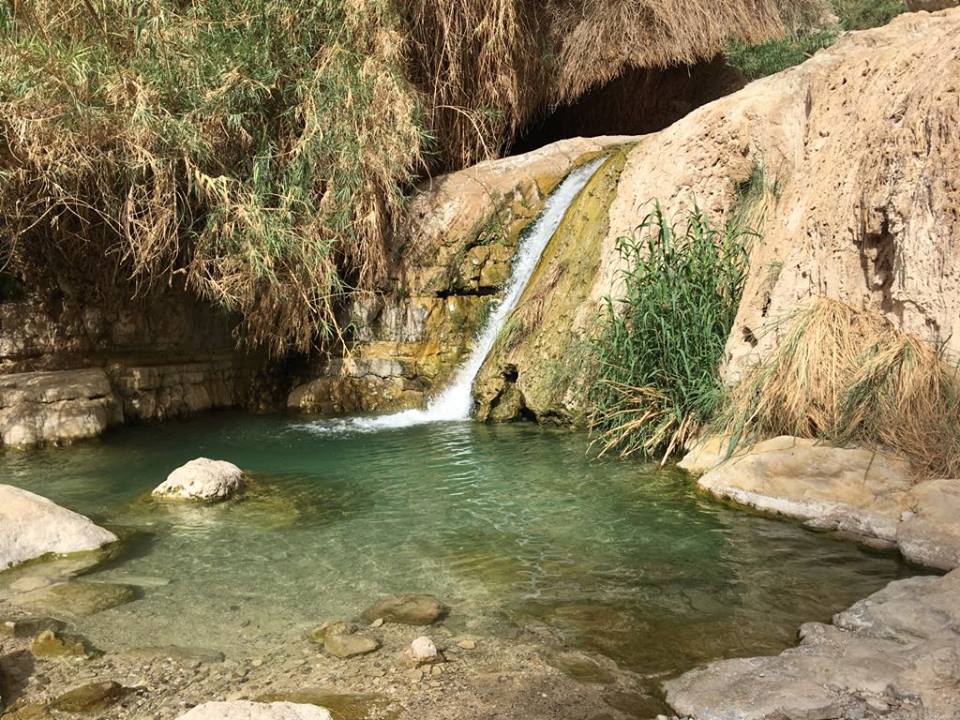
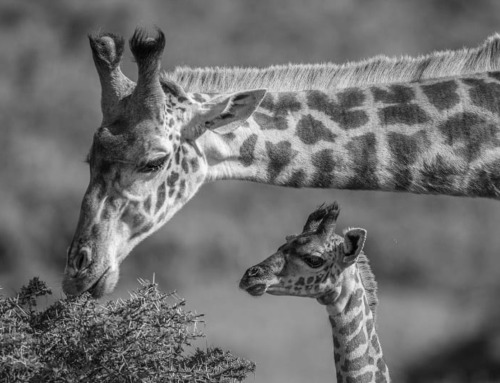
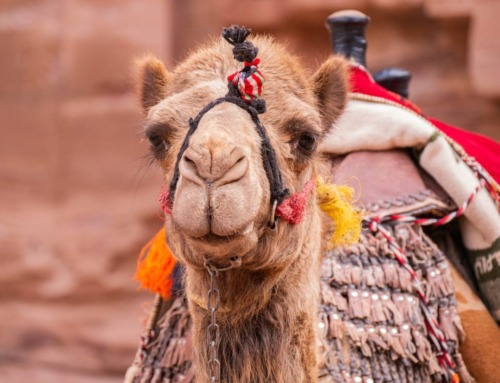
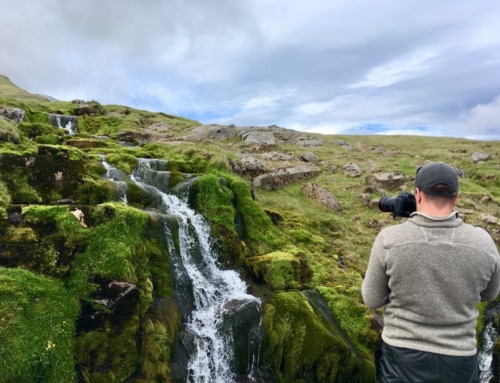
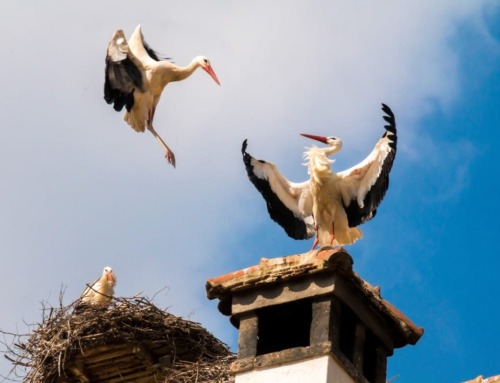
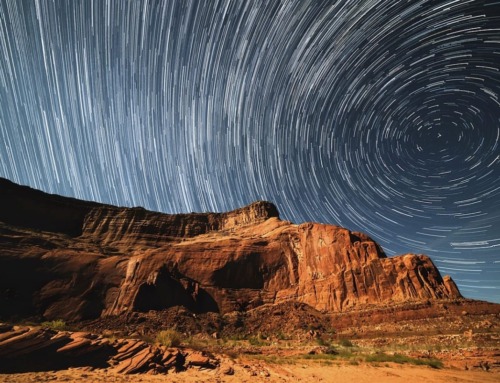

Leave A Comment